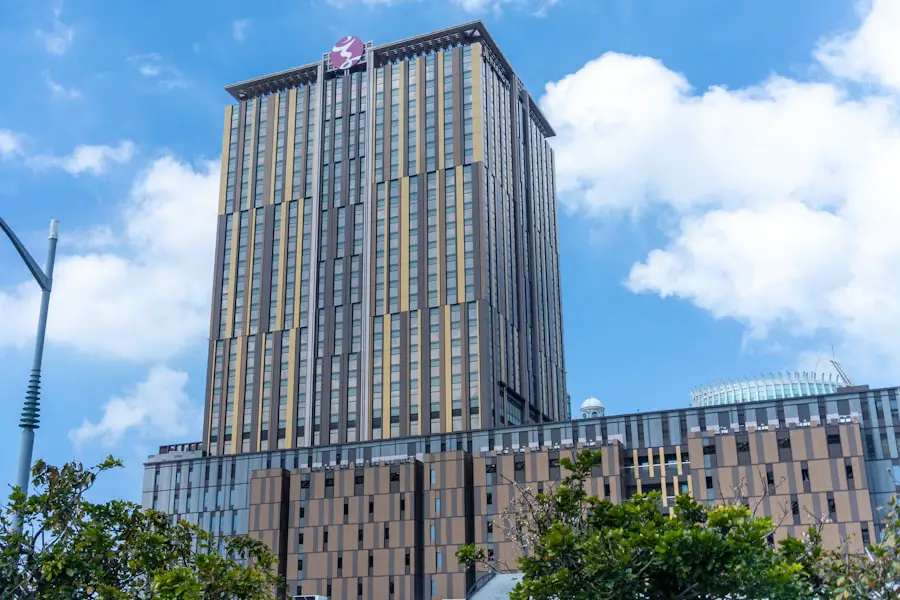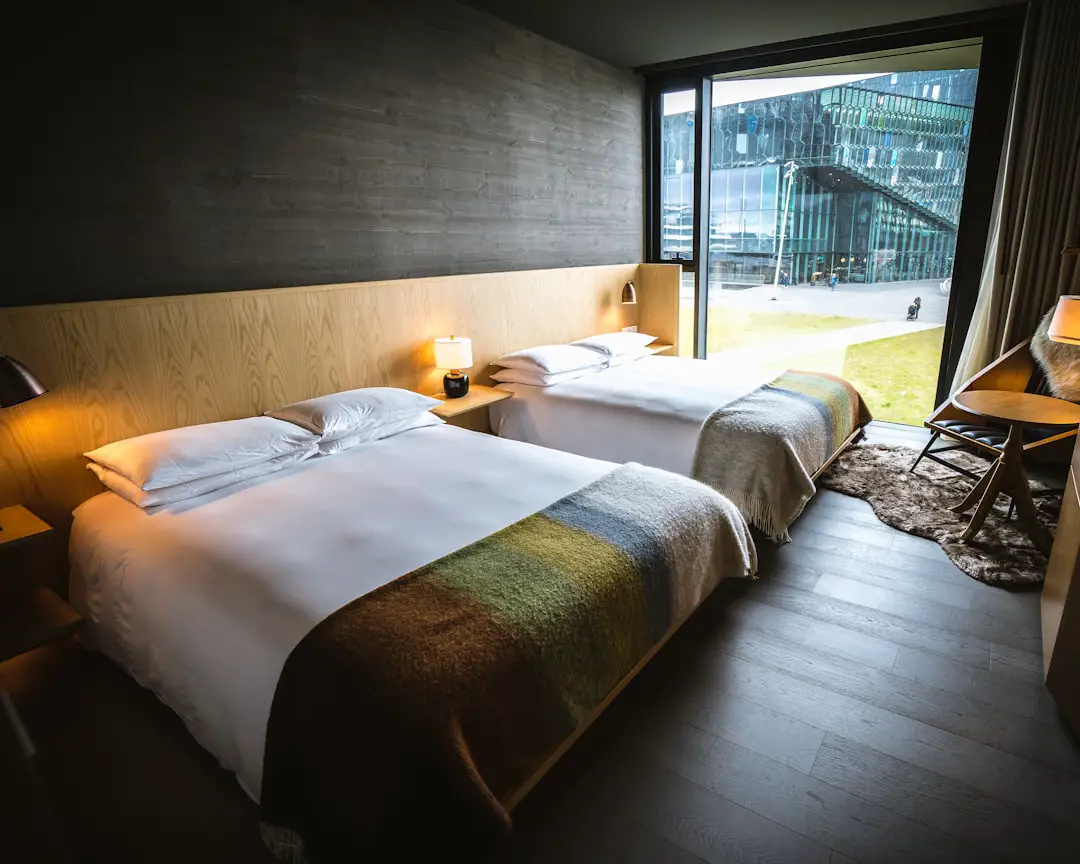Marriott International, a titan in the hospitality industry, boasts an extensive portfolio that encompasses a diverse range of brands catering to various market segments. Founded in 1927 by J. Willard Marriott and his wife, Alice, the company has evolved from a modest root beer stand into one of the largest hotel chains in the world.
Today, Marriott operates over 7,000 properties across 131 countries and territories, offering more than 1.4 million rooms. This remarkable growth trajectory is a testament to Marriott’s strategic vision and adaptability in an ever-changing global landscape. The company’s portfolio is segmented into several distinct categories, including luxury, premium, and select service brands.
Each brand is designed to meet the unique preferences and needs of different travelers, from budget-conscious tourists to high-end business executives. Notable brands under the Marriott umbrella include Ritz-Carlton, St. Regis, Sheraton, and Courtyard by Marriott, among others.
This vast array of offerings allows Marriott to capture a wide audience and maintain a competitive edge in the hospitality sector.
Key Takeaways
- Marriott’s hotel portfolio includes a wide range of brands catering to different types of travelers and their preferences.
- Marriott has a strong presence in North America with a diverse range of properties in key cities and popular tourist destinations.
- The expansion of Marriott in Europe has been significant, with a focus on both leisure and business travel markets.
- Marriott’s growth in Asia Pacific has been driven by the increasing demand for luxury and premium hotel experiences in the region.
- Marriott’s luxury brands and properties offer exceptional service, exquisite design, and unique experiences for discerning travelers.
- Marriott is committed to sustainability and social responsibility, implementing initiatives to reduce environmental impact and support local communities.
- Marriott’s innovative technology and guest experience initiatives aim to enhance the overall stay and provide personalized services for guests.
- The future of Marriott’s hotel portfolio looks promising, with continued expansion, focus on sustainability, and commitment to delivering exceptional guest experiences.
Marriott’s Presence in North America
Marriott’s roots are firmly planted in North America, where it has established a significant presence across the United States and Canada. The company operates more than 5,000 hotels in this region alone, making it a dominant player in the North American hospitality market. Major cities such as New York, Los Angeles, and Chicago feature multiple Marriott properties, catering to both leisure and business travelers.
The brand’s extensive reach is complemented by its loyalty program, Marriott Bonvoy, which has millions of members who benefit from exclusive offers and rewards. In addition to its urban locations, Marriott has also made strides in suburban and rural areas, recognizing the growing demand for accommodations outside major metropolitan centers. This strategic expansion has allowed the company to tap into new markets and attract a diverse clientele.
For instance, the introduction of brands like Fairfield Inn & Suites and Residence Inn has provided affordable yet comfortable lodging options for families and business travelers alike. The emphasis on customer service and quality has solidified Marriott’s reputation as a trusted choice for accommodations across North America.
Marriott’s Expansion in Europe

Marriott’s expansion into Europe has been marked by strategic acquisitions and partnerships that have significantly broadened its footprint on the continent. The company entered the European market in the late 1970s and has since grown to operate over 800 hotels across various countries, including the United Kingdom, Germany, France, and Italy. This growth has been fueled by a combination of organic development and acquisitions of established hotel brands such as Starwood Hotels & Resorts in 2016, which added several prestigious properties to Marriott’s portfolio.
The European market presents unique challenges and opportunities for Marriott. Cultural diversity across countries necessitates a tailored approach to hospitality that respects local customs while delivering the high standards associated with the Marriott brand. For example, in cities like Paris and Rome, Marriott properties often incorporate local design elements and culinary offerings that resonate with both international travelers and locals.
This commitment to localization not only enhances guest experiences but also strengthens brand loyalty in competitive markets.
Marriott’s Growth in Asia Pacific
| Year | Number of Hotels | Number of Rooms |
|---|---|---|
| 2015 | 200 | 50,000 |
| 2016 | 250 | 60,000 |
| 2017 | 300 | 70,000 |
| 2018 | 350 | 80,000 |
| 2019 | 400 | 90,000 |
The Asia Pacific region represents one of the most dynamic growth areas for Marriott International. With a rapidly expanding middle class and increasing travel demand, Marriott has strategically positioned itself to capitalize on these trends. As of 2023, the company operates over 400 hotels in Asia Pacific, with plans for continued expansion in key markets such as China, India, and Southeast Asia.
The region’s diverse cultures and preferences have prompted Marriott to adapt its offerings accordingly. In China, for instance, Marriott has introduced brands like Moxy Hotels and Element Hotels to cater to younger travelers seeking modern amenities at affordable prices. The company has also focused on enhancing its luxury offerings in Asia Pacific with properties like The Ritz-Carlton and St.
Regis in major cities such as Shanghai and Tokyo. This dual approach—targeting both budget-conscious travelers and luxury seekers—has allowed Marriott to establish a robust presence across various market segments in this rapidly evolving region.
Marriott’s Luxury Brands and Properties
Marriott’s luxury segment is a cornerstone of its overall strategy, showcasing some of the most prestigious hotel brands in the world. The Ritz-Carlton and St. Regis are synonymous with opulence and exceptional service, attracting affluent travelers seeking unparalleled experiences.
These luxury properties are often located in prime destinations, offering breathtaking views, exquisite dining options, and personalized services that cater to every whim of their guests. The Ritz-Carlton brand exemplifies this commitment to luxury with its iconic properties that blend sophisticated design with local culture. For example, The Ritz-Carlton in Kyoto features traditional Japanese aesthetics while providing modern amenities that appeal to discerning travelers.
Similarly, St. Regis hotels are known for their butler service, which ensures that guests receive tailored attention throughout their stay. This focus on luxury not only enhances guest satisfaction but also reinforces Marriott’s position as a leader in high-end hospitality.
Marriott’s Commitment to Sustainability and Social Responsibility

In an era where sustainability is increasingly important to consumers, Marriott International has made significant strides in promoting environmentally friendly practices across its operations. The company has set ambitious goals aimed at reducing its carbon footprint and minimizing waste through initiatives such as energy-efficient building designs and water conservation programs. For instance, Marriott has committed to reducing its greenhouse gas emissions by 50% by 2025 compared to 2016 levels.
Moreover, Marriott’s social responsibility efforts extend beyond environmental sustainability. The company actively engages in community development initiatives through its “Serve 360” program, which focuses on making a positive impact on local communities where it operates. This includes supporting education programs, disaster relief efforts, and initiatives aimed at empowering women and minorities within the hospitality industry.
By integrating social responsibility into its core business strategy, Marriott not only enhances its brand reputation but also fosters goodwill among its guests and stakeholders.
Marriott’s Innovative Technology and Guest Experience
As technology continues to reshape the hospitality landscape, Marriott International has embraced innovation to enhance the guest experience. The company has invested heavily in digital solutions that streamline operations and improve customer interactions. For example, the Marriott Bonvoy app allows guests to book rooms, check-in remotely, and even unlock their hotel room doors using their smartphones—features that cater to the growing demand for convenience among modern travelers.
Additionally, Marriott has implemented advanced data analytics to personalize guest experiences further. By leveraging data collected from loyalty program members, the company can tailor marketing efforts and service offerings based on individual preferences. This level of personalization not only enhances guest satisfaction but also drives repeat business as travelers feel valued and understood by the brand.
Furthermore, initiatives like mobile check-in and keyless entry reflect Marriott’s commitment to integrating technology seamlessly into the guest journey.
The Future of Marriott’s Hotel Portfolio
Looking ahead, Marriott International is poised for continued growth as it navigates an evolving hospitality landscape marked by changing consumer preferences and technological advancements. The company’s strategic focus on expanding its global footprint while enhancing its luxury offerings positions it well to capture emerging market opportunities. As travel demand rebounds post-pandemic, Marriott’s diverse portfolio will likely attract a wide range of travelers seeking unique experiences.
Moreover, Marriott’s commitment to sustainability and social responsibility will resonate with increasingly conscious consumers who prioritize ethical travel choices. By continuing to innovate through technology and personalized services, Marriott can enhance guest experiences while maintaining its reputation as a leader in the hospitality industry. As it adapts to new challenges and opportunities, Marriott’s hotel portfolio will remain a vital player in shaping the future of global travel.
Marriott International is a well-known hotel chain that owns a wide range of properties around the world. If you are planning a trip and looking for some travel essentials, you may want to check out this article on the best power bank for international travel. Having a reliable power bank can be essential when traveling, especially if you are staying at one of the many Marriott hotels and need to keep your devices charged while on the go.
FAQs
What hotels does Marriott own?
Marriott International owns and operates a wide range of hotel brands, including Marriott Hotels & Resorts, The Ritz-Carlton, Sheraton Hotels & Resorts, Westin Hotels & Resorts, and many others.
How many hotels does Marriott own?
As of 2021, Marriott International operates over 7,600 properties across 133 countries and territories.
What are some popular Marriott-owned hotel brands?
Some popular Marriott-owned hotel brands include Marriott Hotels & Resorts, The Ritz-Carlton, Sheraton Hotels & Resorts, Westin Hotels & Resorts, JW Marriott, and Courtyard by Marriott.
Does Marriott own luxury hotel brands?
Yes, Marriott International owns several luxury hotel brands, including The Ritz-Carlton, St. Regis Hotels & Resorts, and JW Marriott.
Are all Marriott-owned hotels part of the Marriott Bonvoy loyalty program?
Yes, all Marriott-owned hotels are part of the Marriott Bonvoy loyalty program, which allows members to earn and redeem points for stays at Marriott properties.
